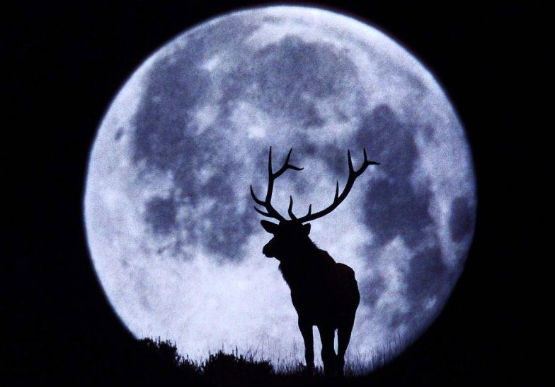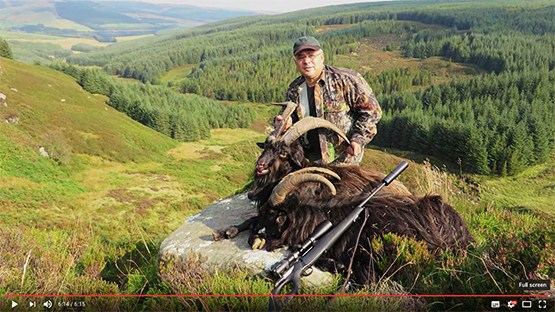November this year is looking as though it may be somewhat of an anomaly. Firstly because of the unseasonably mild start to the autumn and secondly because of a ‘super moon’, no I correct myself, an ‘extra-super moon’ no less.

Observing the countryside basked in a surreal silvery light can be a magical sight. It is however, by this lunar illumination that the deer are able to feed.
So how will this affect the deer? Well let’s deal with each point in turn, firstly considering the less rare occasion of having a mild autumn. In fact this is becoming more regular. I only need to look back to my almanac of last year to see that I was mentioning the same. The effect of course, is that the rut for the larger species of deer commences later in the season, it is also different in nature, rather than being an unbroken period of activity, the rut tends to become more sporadic in nature, coinciding with cold snaps that intersperse the warm trend.
In England and Wales this is of no particular concern, after all the season for Red, Fallow and Sika males extend throughout the winter and into the spring, however in Scotland, it further proves to highlight the nonsensical legislation that protects the males from the 20st October. Increasingly in Scotland, by the time the rut is getting going the season is over. As a rule, stalkers and guests do not want to shoot stags in velvet and guests on the whole want to stalk during the rut, with the open season in Scotland stretching from the 1st July – 20th October, this is therefore problematic in both regards.
As for the ‘extra-super moon’ there is little doubt that observing the countryside basked in a surreal silvery light can be a magical sight. It is however, by this lunar illumination that the deer are able to feed. The result of course, is that their activity levels decline during the day, making it less likely that the stalker will encounter animals.
For those that would like to mark the date in their diary, the extra-super moon will be at its most full around the 14th November and will be 14% bigger and 30 times brighter than other full moons, making it the closest full moon to Earth of the 21st Century!
What do I suggest? Well, as ever, adapt. Personally if you must set out during these dates you may find that activity levels decline at dawn, with the deer having been feeding all night, they may seek a mid day ‘top up’ so a shift to daytime stalking may prove fruitful.
Note I have used the word ‘may’ three times in the last paragraph, and for good reason. Good luck!

On to this month’s film which, like November, is an anomaly. We take a break from deer and instead head north to Northumberland to stalk Feral Goats. For those that have not considered Goat Stalking it’s a useful insight into what is an extremely interesting and often overlooked quarry. To watch this short film follow this link: short-films
 IN Season in England & Wales: Roe Does, Fallow Does & Fallow Buck, Sika Stags & Sika Hinds, Red Stags & Red Hinds, CWD Bucks & CWD Does, Muntjac Buck & Muntjac Does.
IN Season in England & Wales: Roe Does, Fallow Does & Fallow Buck, Sika Stags & Sika Hinds, Red Stags & Red Hinds, CWD Bucks & CWD Does, Muntjac Buck & Muntjac Does.
OFF Season in England & Wales: Roe Buck.
In Season in Scotland: Fallow Buck, Fallow Does, Roe Does, Sika Hinds, Red Hinds.
Off Season in Scotland: Red Stags, Sika Stags & Roe Buck
(Peter Jones - editor)



















